MuBE – Museu Brasileiro da Escultura e Ecologia, São Paulo, Brazil
Opening: Saturday,1st of April, 12.30 – 15h
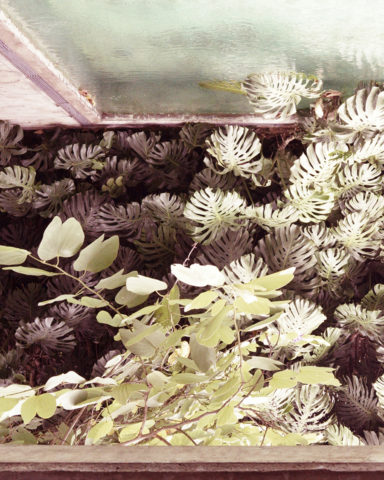
MuBE – Museu Brasileiro da Escultura e Ecologia, São Paulo, Brazil
Opening: Saturday,1st of April, 12.30 – 15h
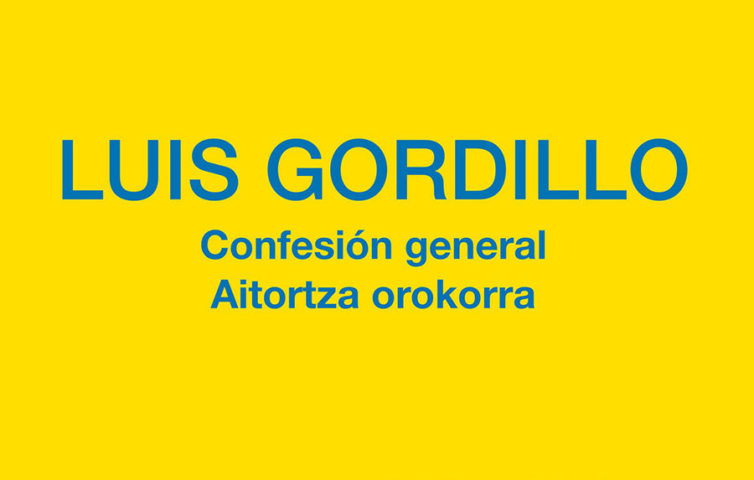
Sala de exposiciones, Koldo Mitxelena Kulturenea, San Sebastián – Donostia
Exposición: 23.03.2017 / 10.06.2017
Luis Gordillo Confesión General es la exposición más importante realizada sobre el artista tras las antológicas del MACBA (1999) y del Museo Nacional Centro de Arte Reina Sofía (2007). En esta muestra se reúnen cerca de doscientas piezas y se hace un recorrido por casi seis décadas y todas sus etapas creativas.
En la exposición se sigue un desarrollo cronológico agrupado por salas específicas que tienen en cuenta las siguientes paradas: sus dibujos automáticos en relación con el informalismo; sus cabezas emparentadas con el pop británico junto a tricuatropatas, peatones y automovilistas; el dibujo como vertebrador de su producción de los años 70 junto con sus experiencias con la imagen fotográfica y la serialidad durante la mayor parte de esa década; los 80 señalizados principalmente en la serie de Los Meandros; los 90 agrupados en torno a uno de sus más importantes cuadros Blancanieves y el Pollock feroz; en los 2000 con nuevas experimentaciones en soportes y técnicas dando entrada a lo digital, para terminar el recorrido con una nueva serie de cabezas realizadas en el año 2015.
Luis Gordillo es Premio Nacional de Artes Plásticas, Medalla de Oro al Mérito de las Bellas Artes, Premio Velázquez e Hijo Predilecto de Andalucía, entre otros muchos reconocimientos. Ha desarrollado una dilatada carrera en el campo de la pintura que viene a aglutinar diversos lenguajes en una amplia variedad de planteamientos, informales o formales, abstractos o figurativos, desplegada en las obras a lo largo de casi seis décadas.
Tras pasar por la Facultad de Derecho de la Universidad Hispalense, se formó en la Escuela de Bellas Artes, y en el año 1958 realizó su primer viaje a París donde entró en contacto con el informalismo, conociendo posteriormente el Pop-art, estética que le ofreció nuevos caminos de expresión. El viaje a París fue determinante en su carrera. Asi mismo, otro episodio que marca su trayectoria artística es su viaje a Londres, y que explica su época pop. En Londres conoce la obra de Hamilton y la de Hockney entre otros y, poco después, las nuevas propuestas norteamericanas, a través de la exposición Arte de España y América, donde Robert Rauschenberg, Jasper Johns y Larry Rivers despertaron aún más su interés por esa nueva figuración tan sugerente.
Luis Gordillo está considerado como el “padre de la nueva figuración madrileña” y uno de los más importantes pintores españoles de las últimas décadas. Su obra está presente en los principales museos nacionales e internacionales. Ha participado en Bienales como las de Venecia y Sâo Paulo, entre otras, así como en destacadas exposiciones en todo el territorio nacional y en el extranjero.
Según el crítico Francisco Calvo Serraller, en la obra de Gordillo “hay una identificación de lo dibujístico con lo pictórico, obsesión por la creación de espacios, grafismo basado en rayados, punteados, manchas y cuadrículas, uso de tinta china con barridos de lápiz, tachaduras y raspaduras, ciertas evocaciones vagamente figurativas y presencia de signos identificables (letras, números, cruces, etc.)”. La producción de Gordillo se ha caracterizado por hacer más complejas las categorías estéticas y los dilemas artísticos, buscando salirse de las simples definiciones y de marcos preestablecidos, para lo que ha desarrollado una constante investigación que le ha llevado a una experimentación permanente.
Esta muestra está coproducida con las siguientes instituciones: Centro de Andaluz de Arte Contemporáneo de Sevilla, el Centro Gallego de Arte Contemporáneo de Santiago de Compostela, el Patronato de la Alhambra y el Generalife, el Centro Guerrero de Granada, lugares a los que viajará en este año 2017.

17.03.2017
18.30 – 20 h
Red Chair Lecture Hall, Bldg 7, CAFA
Hua Jia Di Nan Jie 8, Chaoyang district, Beijing
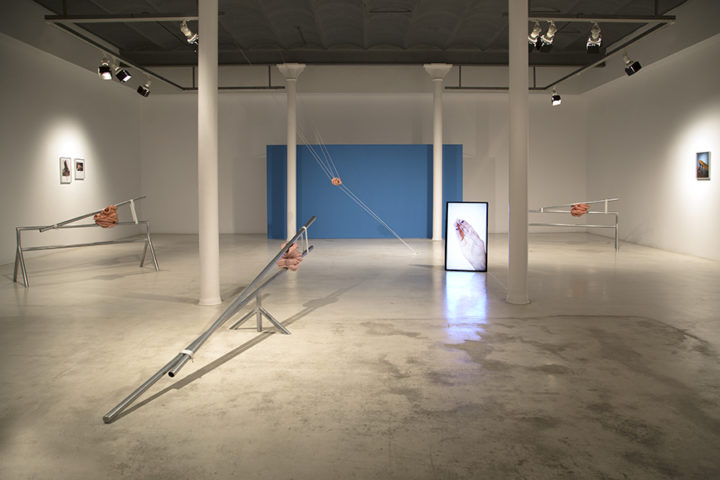
Through ceramic sculptures, videos and photographs, the artist outlines a discontinuous narration, starting from her own body and linked to space exploration. Precisely, the works of the exhibition revolve around the relationship of the artist’s body with her work materials, essentially the ceramics. Through the performative link and the double meaning between subject and material, between structure and mass, Teresa Solar reflects on concepts such as control, resistance, a definitely precarious balance of sense and accident.
The title of the exhibition, Ground Control, has a double meaning. On one hand it is a direct reference to the material, ground or clay, and the pressure exerted on it when working on the potter’s wheel. The body of the artist adopts a position of resistance to control the material, which is plastic and dynamic, this effort makes the body operate as a static structure, as an object, as matter. Through the title, this minimal experience of communication and conflicting balance between subject and matter increases in scale, linking with space travel: “Ground Control” is the center of operations from which the operation of the flight of a spacecraft is monitored. Serving the two for the purpose of a successful expedition, one cannot exist without the other and vice versa, they are part of the same mechanism, a single subject divided into two bodies.
The idea of tense balance between oneself and the world is present in the videos of the exhibition. In Being a person you did not know you were, we see a puppet that adopts the role of the divided adult, of an unknown entity who is born in us and who looks at us from the outside, who turns us in foreigners inside our body. Continuing with the idea of the divided subject, in the video Ground control, the artist is transformed into the clay ball that turns on the potter’s wheel. The image of the turning body is accompanied with fragmented stories that connect the accident of the space shuttle Columbia, exploding into pieces due to a failure in its protective shield, with the personal injuries suffered by the artist herself.
This double relationship is also present in the sculptures of the series Crushed by pressure. The pressure of the metal bars and cords repeats the process of creation of the ceramics, remembering the pile of rubble of an accident, in which the ceramic becomes the body of the subject, controlled and stabilized through structures that deform it. Ceramics allow us to emphasize the contrast between the primitivism of a material and a millenary technique, with the technological sophistication of the ceramic skins that cover the rockets.
In the pieces Pie de foto: Masa and Chamber, Breath, the artist in the potter’s Wheel sign language on White clay balls, creating words that are then compacted and deformed by their own weight, forming a language that exists in the phisical space. In Pie de foto: Masa, ceramic columns hold the photograph of a bone while the engraved stretch marks themselves mean “mass”; the missing body is completed trough the text that supports it.
Teresa Solar Abboud (Madrid, 1985) lives and works in Madrid. She has been a resident and visiting professor at Staatliche Akademie der Bildenden Künste, Stuttgart (2016), she was a finalist of the Rolex Mentorship Program (2016), she received the production grant Fundación Botín (2014), the production grant CAM (2011) and the prize Generaciones (2012). She has individually exhibited at La Panera Lleida (2016), Matadero Madrid (2014) & CA2M Móstoles (2012). Recently she has been selected as finalist for the Prize Cervezas Alhambra of Emergent Art during ARCOmadrid 2017. She will show soon at Haus der Kunst and at Kunstverein München.
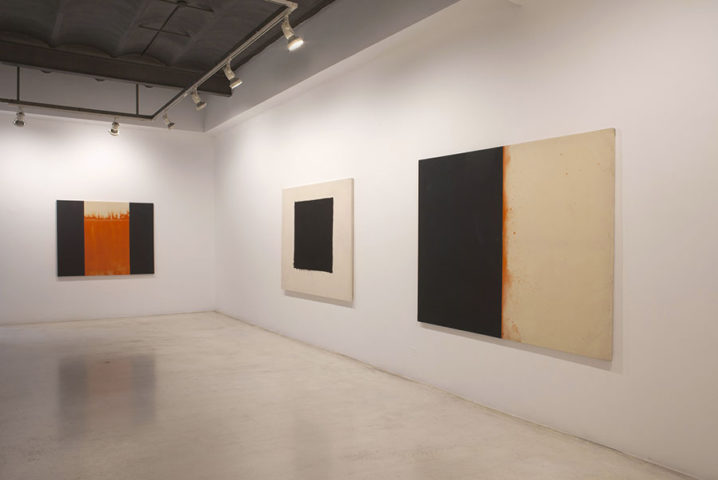
We are pleased to announce Alfons Borrell’s new exhibition at Galeria Joan Prats, next Thursday December 15th.
After the exhibition dedicated to him by Fundació Miró, which gathered sixty years of artistic practice, we present the most recent work of this exceptional creator, who conceives painting as a space of relationship with the world and, at the same time, as an impulse, an emotion and that has stayed away of the tendencies and the prevailing movements throughout his trajectory.
His work is characterized by the importance of color and debate between subtlety and intensity, between openness to nature and introspective recollection. Bound since 1955 to the language of abstraction, he has been influenced in different moments of his life by Anglada Camarasa and Brossa, two artists who, beyond an aesthetic, provided him a vital and ethical attitude towards art. Borrell’s work has been and is currently intense and constant, always moving in parameters that he repeats with rigor and dedication.
The color in Alfons Borrell’s work is an invading agent that moves and fluctuates; the artist defines it as an extension of the person, which blends you with the environment, “if you walk through a forest full of fir trees you turn green, if you could immerse yourself in the sea you would get out blue… ” He says” I would like to be painting “. It is a vision of color and painting, linked to the concept, to the thought, and also to the experience. Borrell uses only five pigments extracted from the earth, green, blue, orange, ocher and gray; while white, from the surface of the canvas, emerges as an apparition of light.
To this work of color, which he has been using repeatedly for its symbolic connotations, the perception of presences and absences, from a particular experience of limits, is added. In his paintings, vertical lines cross the surface symbolically designating a presence, horizontal lines refer to the horizon, and the inability to contain color matter, which sometimes overflows marked margins, shows us the experience of the unlimited.
Borrell’s work needs an active contemplation on the part of the viewer, who establishes a relation of tension with the works. Their experimentation does not depend on codes of interpretation or previous knowledge, but his painting seems to go directly to the observers, interpellating them, but always leaving a space of freedom as a possibility to inhabit its language.
Alfons Borrell (Barcelona, 1931) lives and works in Sabadell. After an initial stage of formation in figurative painting, he got started in abstraction in 1955, with works close to informalism. Far removed from the academic art, he was part of Grup Gallot, an iconoclast and revolutionary group linked to gestural abstraction. This radical experience allowed him to find his own way, of sobriety and silence, throughout the 60’s. From 1976, he began to title his works with the exact date of its completion, like a journal, the same year that he participated in the group show Pintura 1, in the recently inaugurated Fundació Joan Miró of Barcelona, where he would return with a solo show two years later and, in 2015, with a great retrospective. Among the recent years’ exhibitions, stand the one held in 2006 at Centre Cultural Santa Tecla, L’Hospitalet de Llobregat, which traveled to Museu de Sabadell, the one about work on paper held in 2011 at Fundació Palau de Caldes d’Estrac and the one held the same year at Fundació Vila Casas. He has participated in group shows at MNAC, Centre Cultural Tecla Sala, MACBA, CCCB and Centre d’Art Santa Mònica, Barcelona, Museo Rufino Tamayo, Mexico City, Flanders Contemporary Art, Minneapolis, and the Museum of Contemporary Art, Philadelphia. In 2014 he received the GAC prize, an honorary award in recognition of his long career.

Exhibition Kestnergesellschaft, Hannover
Exhibition 11 March – 7 May 2017
Opening 10 March 2017, 7 PM
Since 1983, the Swiss Vordemberge-Gildewart Foundation has traveled throughout Europe to award one of the most highly funded art prizes for young artists under thirty-five. In 2017 the Kestnergesellschaft was selected as the venue for the next award ceremony and a related group exhibition. Friedrich Vordemberge-Gildewart (1899–1962), in whose honor his widow Ilse Leda created the foundation in 1977, has a close connection with the history of the Kestnergesellschaft. On the lower floor of the Kestnergesellschaft, the group exhibition VG award 2017 will bring together twelve young artists from north Germany, Annika Kahrs has been selected by the jury as this year’s prizewinner. With various representatives from the fields of painting, photography, installations, performance, and video art, the exhibition will offer a broad overview of the current north German art scene.
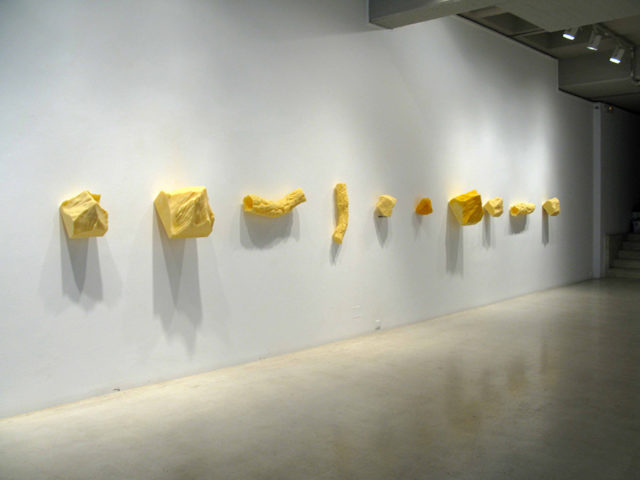
Mataró Art Contemporani
Sales d’exposicions de Can Palauet, Mataró, Barcelona
10.03.17 – 21.05.17
Inauguració: divendres 10 de març, 19 h
Ignasi Aballí | Martí Anson | Isabel Banal | Bestué-Vives | Rafel G. Bianchi | Curro Claret | Enric Farrés | Neil Harbisson | Jordi Lafon + Montsita Rierola | Mariona Moncunill | Perejaume | Raül Roncero | Belén Uriel
Aquest és un projecte pilot per a la realització d’una exposició d’art contemporani a càrrec dels nens i nenes de 5è de primària de l’Escola Angeleta Ferrer i l’Escola Montserrat Solà de Mataró.
El projecte es planteja com a treball de curs, de caràcter transversal, en què aquests nens i nenes de 5è reben l’encàrrec d’idear una exposició d’art contemporani per a les Sales d’exposicions de Can Palauet.
Ells i elles faran de comissaris, triaran el que ens explicarà l’exposició, coneixeran artistes i triaran peces d’alguns d’ells; aprendran com es fa la producció de l’exposició i la dissenyaran: pensaran l’espai i com disposar les peces que hauran triat; redactaran les cartel·les i els fulls de sala; col·laboraran en el muntatge; documentaran el procés i, finalment, pensaran i executaran el servei educatiu i les activitats complementàries.
Pretenem, doncs, fer conèixer l’art i els llenguatges contemporanis des de dins, amb l’objectiu d’explicar l’exposició amb les paraules d’aquests nens i nenes.
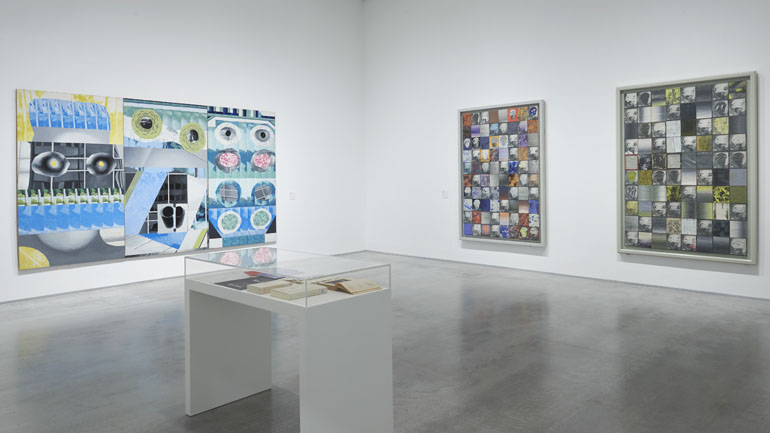
Museo Reina Sofia. Edificio Nouvel
Colección 3.
La obra de Luis Gordillo (1934) nace de una compleja síntesis de elementos diversos, provenientes del informalismo, el arte pop y las corrientes geométricas, fuentes que alimentan su obra de manera simultánea e intencionalmente contradictoria. Su síntesis pictórica se presenta como la constante deconstrucción y reelaboración de una imagen que se reblandece, desinforma y confunde en su apariencia incompleta.
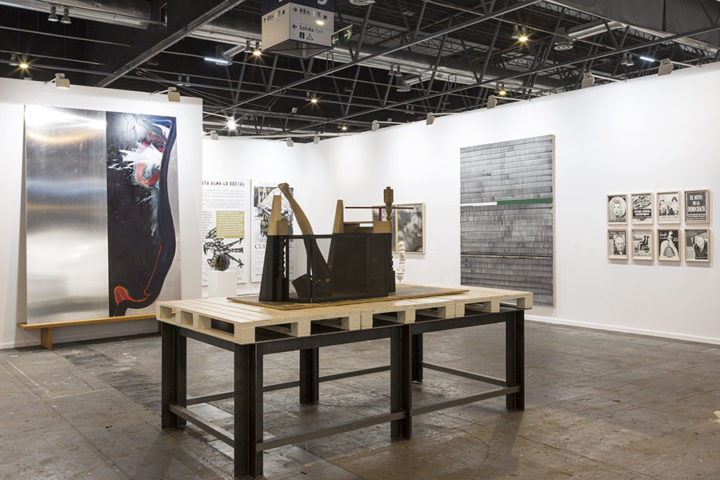
Arco 2017.
Galeria Joan Prats. 9C09
Erick Beltrán, Fernando Bryce, Victoria Civera, Hernández Pijuan, Perejaume, Juan Uslé, Julião Sarmento, José Maria Sicilia, Teresa Solar Abboud.